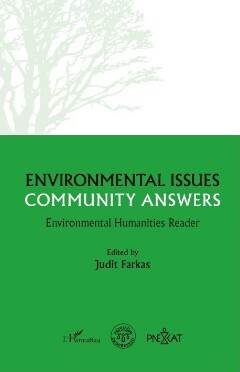Oldal 157 [157]
THE TRAGEDY AND COMEDY OF THE COMMONS 155
(2) communal property, (3) state property* — all three being potentially suitable
for preventing the tragedy, as are their diverse combinations (Feeny et al. 1990;
Ostrom 1990).?
As regards the second postulate, in the tale, short-term and long-term interests
are pitted against each other and the interests of the individual confront those of
the group. Following rational behavior motivation in the short run (putting new
cows to pasture) leads to the tragedy of the group (village, community) in the long
run (meaning of course that in the long run the individual herdsmen — and their
progeny — will also fare worse).'° The question is how to change the competitive
behavior of the group members (not solely that of individuals) who only consider
their own short-term interests and threaten the wellbeing (public weal) of the group
via environmental problems to cooperative behavior which also takes long-term
aspects into consideration in the interest of the group’s wellbeing (public weal).
Both the termination of free access and the alteration of the motivation are
meant to encourage the cattle farmers to adopt a behavior of more care for the
environment, of moderation and increased eco-efficiency (Takacs-Sdnta 2017;
2022).'! In order to solve or alleviate the environmental problems or to prevent
intensifying them, the behavior of individuals and groups of human beings — the
constituents of larger groups and organizations — would have to change. But how
can they be persuaded to adopt an environment-friendly attitude? There are
basically four options (Gardner — Stern 2002; Ophuls 1973; 1977):
1. Via laws, regulations and incentives enacted by the governing bodies.
2. By initiating social, non-governmental processes for the creation of (small)
communities.
3. By spreading information (to change attitudes and spread information about
possible activities).
4. Via a change of the value system and worldview.
The first two are based primarily on changing (or creating) social institutions.
The main aim of the latter two is a change in mentality. I review these four options
in more detail below, on the basis first of all of Gardner and Stern (2002),'? but
also relying on several other works [only the latter are referred to separately].
§ It is an interesting question which form the municipal property of a settlement is closest to. In a
certain sense, it is closest to state property, but in some other aspects to collective property —
depending on the extent to which the inhabitants of the settlement have a say in decision-making.
The case when common goods become private property is not dealt with further in the paper. We
only discuss the two cases of collective property.
In the model story, the herdsmen are motivated by their short-term interests in a narrow sense in
all their decisions. In other words, they act in accordance with the dominant ideal of the human
being cherished by modern economics: the Homo oeconomicus. Though this image of the human
being does not describe real human behavior without fail, in today’s market-oriented societies we
have become Homines oeconomici to a certain degree, because the dominant socio-economic system
rewards this kind of behavior in most cases.
Eco-friendly is defined as the behavior of an individual or organization which lessens the pressure
on the environment, irrespective of the intentions of the actor. By contrast, eco-conscious behavior
— not discussed here in detail — implies the will of the actor to decrease the pressure on the
environment, yet this intention may remain ineffective (cf. Stern 2000). For instance, in vain does
an eco-conscious person collect waste selectively, if it is transported for processing to another
continent. The pressure from transportation can easily exceed its impact caused by local
“neutralization”. In the final analysis, this person’s behavior is not eco-friendly.
In the academic literature, different authors discuss options for preventing the tragedy of the

